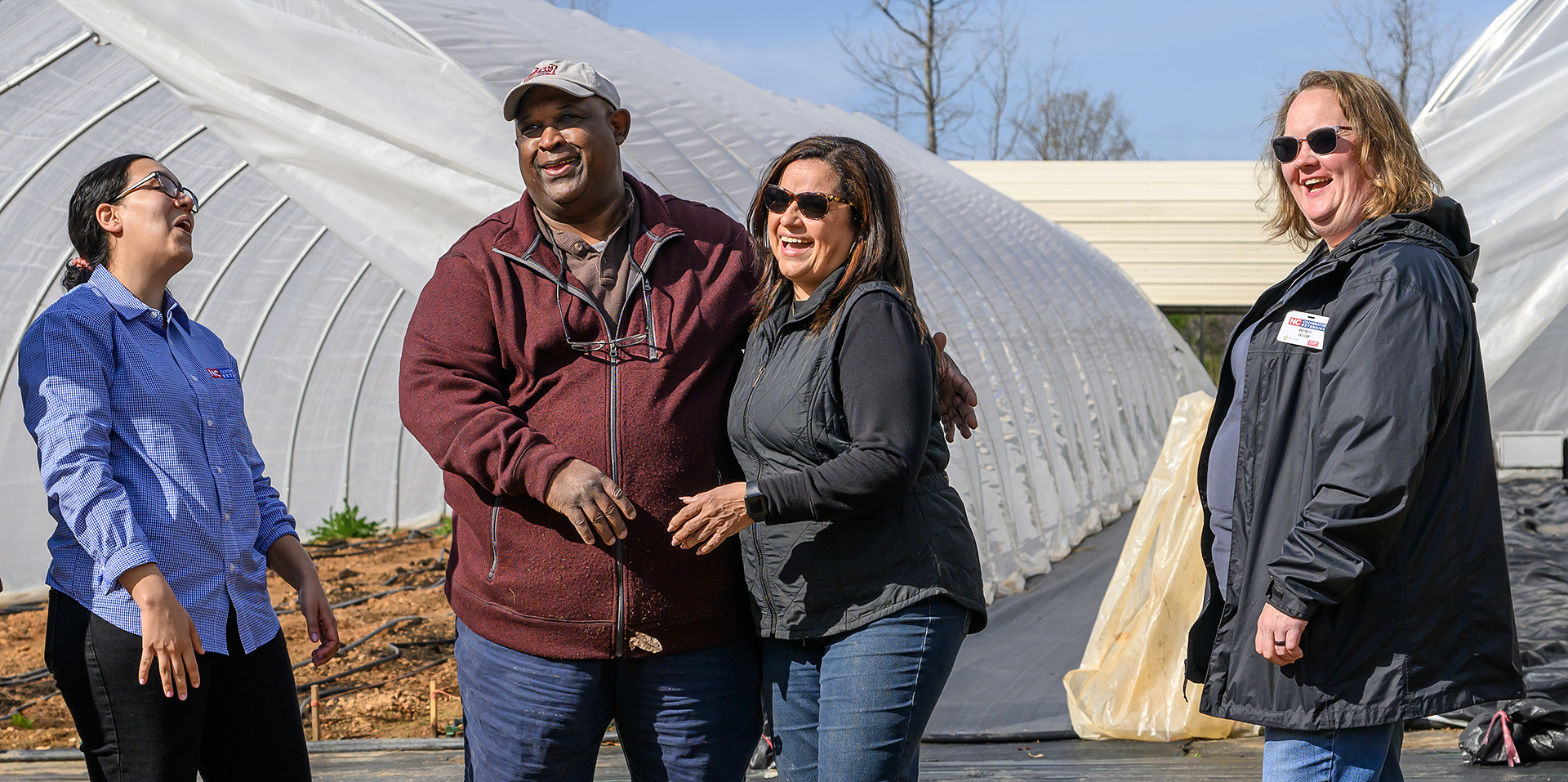Proposed Sutton-on-the-Forest solar farm attracts local criticism – BBC

Report on Proposed Solar Farm in North Yorkshire and its Alignment with Sustainable Development Goals
Project Overview
- Developer: Ampyr Solar Europe
- Location: 95 hectares of agricultural land near Sutton-on-the-Forest, North Yorkshire
- Capacity: 49.99 MW
- Proposed Duration: 50 years
Contribution to Climate Action and Clean Energy (SDG 7 & SDG 13)
The proposed development directly supports key United Nations Sustainable Development Goals related to environmental sustainability.
- SDG 7 (Affordable and Clean Energy): The project is designed to generate renewable energy sufficient to power an estimated 24,400 homes, increasing the share of clean energy in the national grid.
- SDG 13 (Climate Action): By displacing fossil fuel-based energy generation, the solar farm is projected to save 21,000 tonnes of CO2 emissions annually, contributing directly to climate change mitigation efforts.
Challenges to Biodiversity and Food Security (SDG 15 & SDG 2)
Objections to the scheme highlight a potential conflict with SDGs concerning terrestrial ecosystems and sustainable agriculture.
- SDG 15 (Life on Land):
- Concerns have been raised by local residents regarding the negative impact on threatened and endangered bird species that inhabit the area’s arable land.
- Species identified as being under threat include corn buntings, yellowhammers, and yellow wagtails.
- Objectors argue that the conversion of this habitat would undermine efforts to protect and restore terrestrial ecosystems and halt biodiversity loss.
- SDG 2 (Zero Hunger):
- The project is contested on the grounds that it involves the conversion of “good arable land” suitable for crop production.
- Critics argue that removing this land from agricultural use for 50 years could compromise local and national food production capabilities, running counter to the goal of ensuring sustainable food systems.
Impact on Sustainable Communities and Heritage (SDG 11)
The project’s effects on the local landscape and cultural heritage are also under consideration in the context of creating sustainable communities.
- SDG 11 (Sustainable Cities and Communities): The planning documents acknowledge that the development will cause some adverse visual and landscape impacts.
- Furthermore, the project is deemed to cause “less than substantial harm” to the setting of a nearby Grade II-listed farmhouse, raising questions about the protection of local cultural heritage.
Application Status
- The planning application has been submitted to North Yorkshire Council, with numerous objections filed by local residents.
- A decision balancing the project’s contributions to clean energy goals against its potential negative impacts on biodiversity, food security, and local heritage is expected by October.
-
SDGs Addressed in the Article
The article highlights a conflict between different sustainability priorities, touching upon several Sustainable Development Goals (SDGs). The primary SDGs connected to the issues are:
- SDG 7: Affordable and Clean Energy: The core of the article is about a proposal for a new solar farm, which is a form of clean and renewable energy.
- SDG 13: Climate Action: The solar farm is presented as a measure to combat climate change by reducing carbon emissions.
- SDG 15: Life on Land: A major point of contention is the potential negative impact of the development on local wildlife, specifically endangered bird species and their habitat.
- SDG 2: Zero Hunger: The use of “good arable land” for the solar farm raises concerns about its impact on food production and agricultural sustainability.
-
Specific SDG Targets Identified
Based on the article’s content, the following specific targets under the identified SDGs can be pinpointed:
SDG 7: Affordable and Clean Energy
- Target 7.2: “By 2030, increase substantially the share of renewable energy in the global energy mix.” The proposed 49.99 MW solar farm directly contributes to this target by aiming to add a significant source of renewable energy to the local power supply, enough to “power 24,400 homes.”
SDG 13: Climate Action
- Target 13.2: “Integrate climate change measures into national policies, strategies and planning.” The planning application for the solar farm is a local-level example of integrating climate change mitigation measures into land-use planning. The developer’s claim that it would “save 21,000 tonnes of CO2 per year” is a direct climate action measure.
SDG 2: Zero Hunger
- Target 2.4: “By 2030, ensure sustainable food production systems and implement resilient agricultural practices… that help maintain ecosystems…” The debate over using “good arable land” capable of supporting “cereal crops” for a 50-year solar farm project directly relates to this target. Objectors argue that removing this land from food production is not a sustainable practice, especially as “food production in this country may become valued again.”
SDG 15: Life on Land
- Target 15.5: “Take urgent and significant action to reduce the degradation of natural habitats, halt the loss of biodiversity and, by 2020, protect and prevent the extinction of threatened species.” The central objection to the project is its potential to “negatively impact endangered bird life.” The article explicitly mentions that the land is “rich in corn buntings, yellowhammers and yellow wagtails, all under significant threat,” directly invoking the need to protect threatened species and their habitats.
-
Indicators Mentioned or Implied
The article contains several quantifiable and qualitative pieces of information that can serve as indicators to measure progress towards the identified targets:
Indicators for SDG 7 & 13
- Renewable energy capacity: The article specifies the farm’s proposed capacity as “49.99 MW.” This is a direct indicator of the increase in renewable energy generation capacity (relevant to Target 7.2).
- CO2 emissions saved: The developer’s claim that the project will “save 21,000 tonnes of CO2 per year” is a direct indicator for measuring climate action and mitigation efforts (relevant to Target 13.2).
- Homes powered by clean energy: The statement that the farm would “power 24,400 homes” serves as a practical indicator of the project’s contribution to clean energy access.
Indicators for SDG 2 & 15
- Area of agricultural land converted: The article states the scheme covers “95-hectare” of what is described as “good arable land.” This figure is an indicator of the amount of productive land being repurposed, which is relevant to food production sustainability (Target 2.4).
- Status of threatened species: The specific mention of “corn buntings, yellowhammers and yellow wagtails” as “threatened species” that rely on the arable crops on the land serves as a qualitative indicator. Monitoring the populations of these specific birds in the area would be a way to measure the project’s impact on biodiversity (relevant to Target 15.5).
-
Summary Table of SDGs, Targets, and Indicators
SDGs Targets Indicators Identified in the Article SDG 7: Affordable and Clean Energy 7.2: Increase substantially the share of renewable energy in the global energy mix. - Proposed renewable energy capacity: 49.99 MW
- Number of homes to be powered: 24,400
SDG 13: Climate Action 13.2: Integrate climate change measures into national policies, strategies and planning. - Annual CO2 savings: 21,000 tonnes
SDG 2: Zero Hunger 2.4: Ensure sustainable food production systems and implement resilient agricultural practices. - Area of “good arable land” to be converted: 95 hectares
- Duration of land use change: 50 years
SDG 15: Life on Land 15.5: Take urgent action to reduce the degradation of natural habitats and halt the loss of biodiversity. - Specific threatened species impacted: Corn buntings, yellowhammers, and yellow wagtails
Source: bbc.com

What is Your Reaction?
 Like
0
Like
0
 Dislike
0
Dislike
0
 Love
0
Love
0
 Funny
0
Funny
0
 Angry
0
Angry
0
 Sad
0
Sad
0
 Wow
0
Wow
0



















































.jpg.webp?itok=0ZsAnae9#)

























